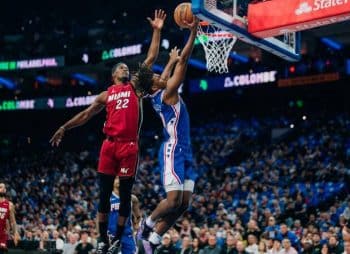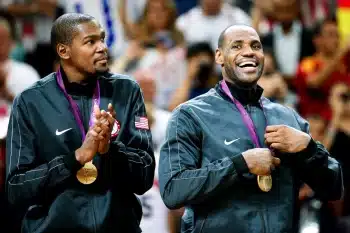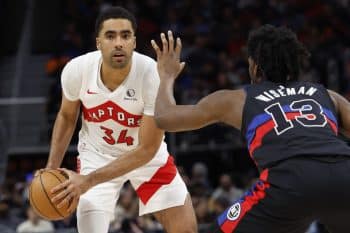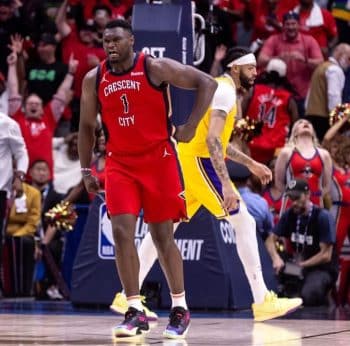NBA
What Should the Celtics Do With All Their Draft Picks?

Asset (noun): a valuable person or thing; something that is owned by a person, company, etc.
Front office executives stay tight-lipped on a lot of business matters. But Boston Celtics president of basketball operations Danny Ainge doesn’t hide his feelings when it comes to one issue: the value of accumulating draft picks.
“Draft picks are always tradable, players are not,” he replied when asked if there is such a thing as too many picks on Monday. “Draft picks are always assets until sometimes they’re drafted, until they become players, or until they become paid.”
The Celtics have stockpiled an arsenal of future picks into next five years. Some are their own, others are owed, and a handful are conditional. Regardless of where they end up falling in the draft order, the Celtics view them as movable pieces that have value far beyond the players they are eventually used to select.
The point of piling up picks is not to own the first round of every draft. The Celtics aren’t positioning themselves to dominate the lottery for near future. If all goes as intended, they won’t use many of the picks for themselves. These are pieces to be included in trades, just like players under contract. (Click here for a rundown of the Celtics future picks.)
The Celtics really bolstered their picks in the summer of 2013 when they landed three first rounders in the Paul Pierce-Kevin Garnett trade with the Brooklyn Nets and another in the Doc Rivers deal with the Los Angeles Clippers. That was only a lead-in to this season’s early moves.
When they traded Rajon Rondo to the Dallas Mavericks in December, the transaction did not yield another All-Star in return. Instead, the Celtics received three players (one of whom he already been traded), a 2015 conditional first round pick, a 2016 second round pick and a trade exception. Three weeks later, the Celtics traded Brandan Wright from that deal to the Phoenix Suns for a 2015 protected first round pick.
The Celtics then moved Jeff Green to the Memphis Grizzlies in a three-team trade with the New Orleans Pelicans, which yielded a future first round pick from the Grizzlies in addition to Tayshaun Prince and Austin Rivers. There were talks of the Celtics moving Rivers to the Los Angeles Clippers before the Green trade was even finalized, and Prince’s place with the team is uncertain.
In the end, the Celtics did not make these deals to acquire pieces for their current roster. The picks hold the highest value of these packages.
The Celtics have seen this approach work in the past. They used draft picks to build their mega roster in 2008, which transformed the organization from a 24-win team to a champion. In the Ray Allen deal with the Seattle SuperSonics, the Celtics drafted Jeff Green with the fifth pick and included him and a second round draft pick in the package. Two first round draft picks were included in the Kevin Garnett deal with the Minnesota Timberwolves. These players-to-be-determined-later were utilized to achieve an immediate goal.
“I think you have to build through the draft,” said Ainge. “Last time we built through the draft. Then we developed players and we were able to trade to get some veteran guys that were more ready to win, more compatible with Paul Pierce at the time. But we did it through the draft, and that’s how I look at it. Right now we’ll do the same thing. We’ll draft players, we’ll develop players and we’ll look for opportunities to take steps forward.”
How many picks will the Celtics end up using for themselves? Who will these players be? When will they come to Boston? Will they come to Boston at all?
That remains to be seen.
The Celtics have other a month to finagle with their current players, which includes four expiring contracts (Brandon Bass, Marcus Thornton, Prince, Rivers). Next season Jameer Nelson has an early termination offer, Jae Crowder has a qualifying offer, and Phil Pressey is non-guaranteed. Only Avery Bradley has a definitive long-term deal (he signed four-year contract signed this past offseason).
The main objective is to unload salaries to free up cap space and build toward the future. The Celtics can dig into their pile of picks and pair them with expiring deals or lengthier contracts to facilitate a move. There are plenty of teams around the league short on picks thanks to previous trades that are hungry to gain them back.
It isn’t uncommon to move picks and land a role player or starter. In an ideal world for the Celtics, though, they will be able to use these picks in a deal to acquire stars like they did in 2008. Down the road there could be teams with high-level players that aren’t a fit for their current situation, or others who are clogging up cap space. A team like the Celtics that hold picks could help facilitate that kind of deal.
The Celtics roster has been a flurry of changing faces this season, and that trend could continue.
“I’ve talked with all the guys,” said Ainge. “I think everybody is pretty certain of what their situation is — as certain as they can be, as certain as I am, which is somewhat uncertain.”
What is certain, however, is how the Celtics are building toward their future.











